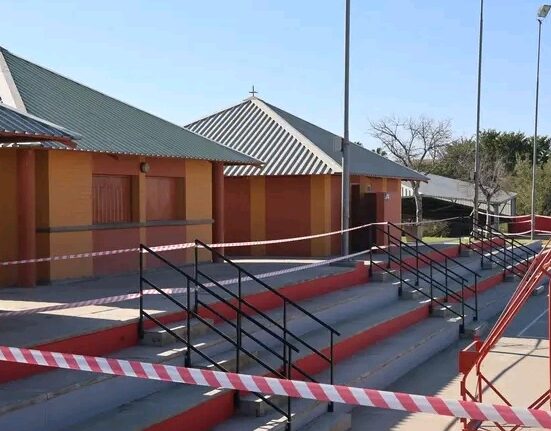Namibia, a country known for its rich cultural diversity, stunning landscapes, and vast deserts, is experiencing a demographic shift. While it remains one of the youngest countries in Africa, with a median age of around 21 years, Namibia’s population is gradually ageing. This demographic change brings with it a host of economic, social, and healthcare-related challenges that need to be addressed as the country moves forward.
As Namibia’s population continues to grow, the number of elderly citizens is rising, putting pressure on the nation’s systems, including its healthcare, pension, and social support services. Understanding the trends behind this shift and its potential impact on the country’s future is crucial for policymakers, businesses, and citizens alike.
The Current State of Namibia’s Ageing Population
Namibia’s population has been steadily growing over the past few decades. According to the 2021 Namibia Population and Housing Census, the country’s population is estimated to be around 2.6 million people, and this number is expected to rise in the coming years. However, Namibia’s population growth rate has slowed significantly, reflecting both a decline in fertility rates and increased life expectancy. These two factors are contributing to the ageing trend, where the proportion of the elderly (aged 60 years and older) is increasing.
In the 1990s, elderly people made up a small percentage of Namibia’s total population. Today, this group has become more noticeable, with the proportion of the population aged 60 years and above increasing over the years. This shift is expected to continue as healthcare improves, life expectancy rises, and fertility rates decrease.
Factors Contributing to Namibia’s Ageing Population
Several key factors contribute to the changing demographics of Namibia’s population. These include:
- Declining Fertility Rates Over the past few decades, Namibia has experienced a decline in fertility rates. In the early 1990s, Namibia’s fertility rate was over 5 children per woman. However, this number has dropped to around 3.3 children per woman as of recent reports. The reduction in fertility rates is attributed to various factors, including increased access to family planning, better education for women, urbanization, and changing social norms. As a result, fewer children are being born, and the proportion of older individuals is rising.
- Increased Life Expectancy With improved healthcare infrastructure and advancements in medical technology, life expectancy in Namibia has been steadily increasing. In the early 1990s, life expectancy was around 55 years. Today, it is closer to 64 years, with some estimates suggesting it may rise further. This increase is due to improvements in healthcare systems, better disease prevention, and advancements in treatments for illnesses that primarily affect older populations.
- Migration and Urbanization Like many African nations, Namibia is seeing increasing urbanization, with more people moving to cities in search of work and better living conditions. While this migration is often associated with younger people seeking employment, older individuals, particularly those who are retired or nearing retirement age, are also moving to urban areas where healthcare and social services are more accessible. As a result, urban areas are experiencing a rise in the number of elderly residents.
- Decreased Mortality Rates Namibia has made significant strides in reducing infant and child mortality rates, which traditionally exerted pressure on the younger population. With improved access to maternal and child health services, fewer children are dying at a young age, contributing to a larger base of the population surviving into old age.
- The Impact of HIV/AIDS While Namibia has made significant progress in combating HIV/AIDS, the disease had a severe impact on the country’s demographics in the 1990s and early 2000s. High mortality rates, particularly among young adults, led to a skewed age structure. However, over time, with better prevention, treatment, and awareness programs, the impact of HIV/AIDS on mortality rates has decreased, leading to an increase in the elderly population as younger generations survive longer.
The Economic Impact of an Ageing Population
As Namibia’s population continues to age, it will have a profound effect on the economy. The ageing population will not only influence Namibia’s labor force but also affect the government’s social welfare systems, pension schemes, and healthcare systems.
- Pension Systems and Financial Security One of the most immediate challenges that Namibia faces as its population ages is ensuring financial security for the elderly. Currently, the country’s pension system covers only a small portion of the elderly, and many seniors rely on family support for their well-being. As the elderly population increases, there will be greater pressure on the government to extend coverage and ensure that older individuals can live independently without relying on extended family networks.
- Increased Healthcare Costs Older populations typically require more healthcare services. Chronic diseases such as hypertension, diabetes, and arthritis become more prevalent as people age, which increases the burden on the healthcare system. Namibia will need to allocate more resources to its healthcare infrastructure to accommodate the rising demand for medical services among the elderly. This will require both government spending and increased investment in healthcare facilities, particularly in rural areas where elderly care is less accessible.
- A Shrinking Workforce As the number of elderly citizens rises, the working-age population (people aged 15-64) will decrease in proportion to the total population. This could lead to a shrinking labor force, potentially leading to labor shortages in key sectors. The impact of a shrinking workforce could be mitigated if there are more programs to integrate the elderly into the workforce, such as part-time or flexible work options, or if Namibia attracts skilled migrant workers to meet labor demands.
- Social Security and Welfare Programs The growing elderly population will also increase the demand for social security and welfare programs. Namibia will need to rethink its social protection systems to ensure that the elderly have access to adequate income, housing, and social support. The government will need to create policies that allow for long-term sustainability while also addressing the needs of the elderly population.
Addressing the Ageing Population: Policy Solutions
To address the challenges posed by an ageing population, Namibia must implement a range of policies and strategies that promote the well-being of elderly citizens while ensuring the sustainability of the country’s economic and social systems.
- Improving Healthcare for the Elderly The government should invest more heavily in healthcare infrastructure and services tailored to the needs of the elderly, including geriatrics, long-term care, and rehabilitation services. Creating more accessible healthcare options in both urban and rural areas will be key to ensuring that the elderly receive the care they need as they age.
- Expanding Pension and Social Protection Systems Namibia needs to strengthen its pension systems to provide better financial security for the elderly. Expanding coverage, increasing the amount of benefits, and providing additional social safety nets, such as food and housing assistance, can help ensure that older individuals do not fall into poverty after retirement.
- Promoting Active Ageing Encouraging older citizens to remain active in the workforce, whether part-time or through volunteer opportunities, can help reduce the economic strain on the younger population and promote intergenerational solidarity. Programs that focus on lifelong learning, skill development, and opportunities for older workers can help mitigate the effects of an ageing population.
- Raising Public Awareness Educating the public on the realities of an ageing population is essential for fostering a more inclusive society. Promoting attitudes of respect and support for the elderly can ensure that Namibia’s older citizens are not marginalized but rather integrated into the broader social and economic systems.
- Supporting Family Caregivers Family caregivers play a crucial role in Namibia’s aging population, especially in rural areas. Providing financial support, training, and resources to caregivers can help ensure that elderly citizens are cared for in their homes, which can be a more affordable and personalized option compared to institutional care.
Namibia’s ageing population is a demographic shift that presents both challenges and opportunities. While the country faces rising healthcare costs, pension pressures, and a potential shrinking workforce, these challenges can be addressed with the right policies and investments. With careful planning and consideration, Namibia can ensure that its elderly population enjoys a dignified and secure life while preserving economic growth and sustainability. By preparing for these changes now, Namibia can foster a society that values and cares for its older generations, setting the stage for a more inclusive future for all.
Join 'Namibia Today' WhatsApp Channel
Get the breaking news in Namibia — direct to your WhatsApp.
CLICK HERE TO JOIN












